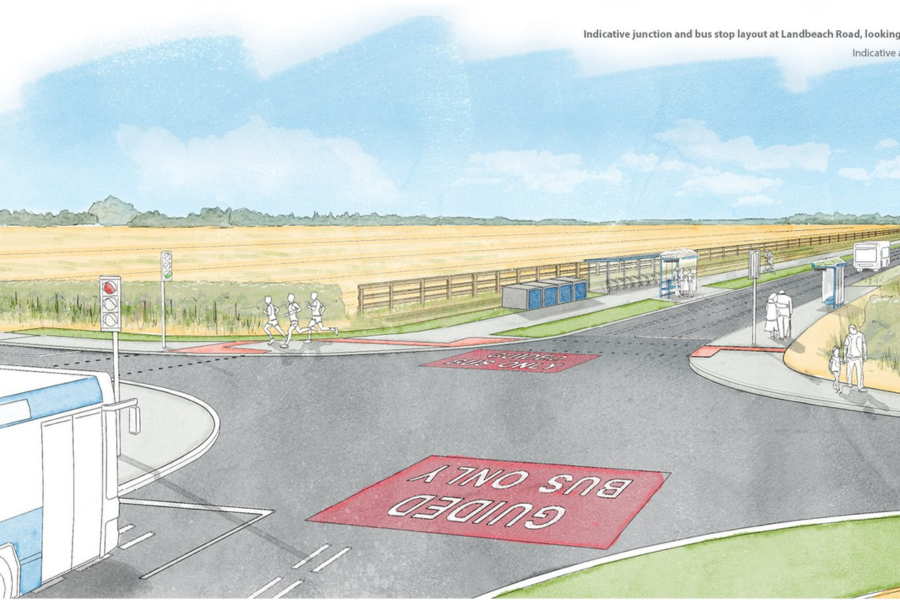This week councillors at Cambridgeshire County Council voted to submit a Transport and Works Act Order (TWAO) application for the Waterbeach to Cambridge busway to the Department of Transport.
Cllr Elisa Meschini: why is the Waterbeach to Cambridge busway so important?

This is the third of the busways which we at the Greater Cambridge Partnership have developed to meet the needs of those wanting to travel in, out and around the city. It is a significant moment and one I am keen to recognise.
First let me explain, why the Waterbeach to Cambridge scheme is important.
To start it’s a key route into Cambridge from the north. But the A10 is already heavily congested during peak times and the railway between Waterbeach and Cambridge also suffers overcrowding.
The A10 suffers from significant congestion during peak times, particularly at the Cambridge end. According to VivaCity sensor data on the A10 south of Milton Park & Ride, there was an average of 26,516 vehicle movements monthly from January to October 2024.
Construction for 11,000 new homes is already underway at the new town of Waterbeach. 20,000 new jobs are planned in northeast Cambridge and more employment space at the Cambridge Research Park off the A10. This will add more pressure on the existing network if nothing is done to improve transport options.
The Greater Cambridge Partnership has looked at the problem developed the case for a new off-road 6.5km busway linking the new town with the existing busway in north Cambridge with a path for walkers and cyclists, as well as a new travel hub site near Waterbeach. It is likely to:
- increase daily bus and Park & Ride passengers by 3,500 per day;
- increase daily numbers of walkers and cyclists by 1,500 per day; and
- reduce daily private vehicle trips by 2,200 per day.
- So a really important solution to a problem which we all know exists – as this comment from a Waterbeach resident confirms:
“Traffic on the A10 into Cambridge has always been bad. The busway sounds like a fabulous solution and one I would definitely use to avoid driving into town.”
For me, this TWAO application decision signals our commitment to connect our network of busways together to create an integrated travel system. Why is this important? Well let’s listen to three students from Cambridge Regional College who told us of their experiences of the existing busway:
Charlie has told us: “The cost of it is a major plus you don’t have to rely on other people especially if you’re younger to get to places you can rely on yourself.”
Then there are Charlotte and Lily: “As much as obviously it’s a wonderful experience to be driving around, I think the bus in a lot of instances is a better option. Definitely more convenient and cheap and easier.”
Young people are great so often at making things so simple and obvious.
Our busways will be quick and easy with frequent 'turn up and go' bus services which will be reliable – running mostly off-road, not getting stuck in traffic.
They will provide more travel choices – enabling people to take the bus, walk or cycle into Cambridge. We estimate the network (including the original St Ives busway) will carry over five million passengers a year.
The schemes will also be sustainable – electric or eco-friendly buses, with at least 10% biodiversity net gain to offset environmental impacts of the construction.
The busways will not just look to connect with each other but also link to our developing greenways network.
This is why on a chilly February day I can feel very optimistic about the future transport infrastructure which we are creating for residents, students and communities to give people choice in how they travel to where they need to go.
